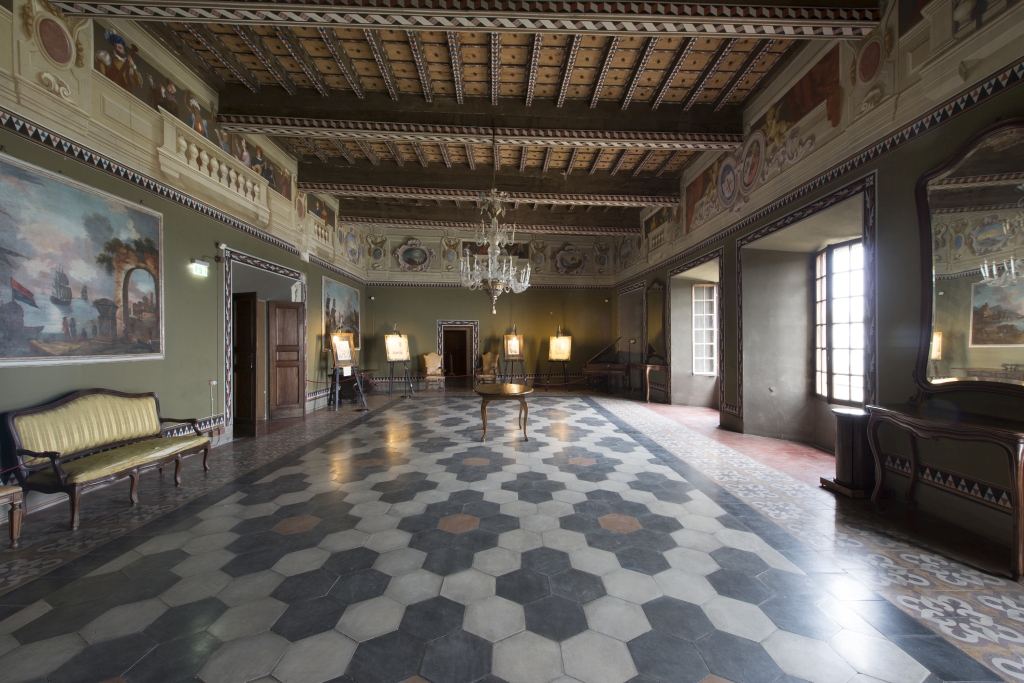Bianello Castle
Address and contacts
![]() Via Bianello, 8 - 42020 Quattro Castella
Via Bianello, 8 - 42020 Quattro Castella ![]() Gruppo Storico Il Melograno 0039 333 2718737
Gruppo Storico Il Melograno 0039 333 2718737![]() infosegreteriailmelograno@gmail.com
infosegreteriailmelograno@gmail.com![]() Gruppo Storico Il Melograno
Gruppo Storico Il Melograno
To keep fit. Four steps into the Bianello Oasis! Download the map.
Opening times
April-November 2025
April 19, 26, 27: 2.00-7.00 p.m.
April 20, 21, 25: 11.00 a.m. - 1.00 p.m. and 2.00-7.00 p.m.
May 1: 11.00 a.m. - 1.00 p.m. and 2.00-7.00 p.m.
May 3, 4, 11, 18, 25, 31: 2.00-7.00 p.m.
June 1 , 2: 11.00 a.m. - 1.00 p.m. and 2.00-7.00 p.m.
Then, until November 2, 2025: Sunday and holidays 2.00-7.00 p.m.
Guided tours to the Bianello Castle
The castle is accessible only with a guided tour. Visits to Bianello Castle are all conducted with a guide (it is not possible to visit the castle independently). During the tour, you will see the various rooms of the castle (more than 10), which are still fully furnished, and you will have the opportunity to discover the history of the castle over the years.
All tours last one hour and are conducted in groups of up to 30 people per time slot.
ACCESSIBILITY: There are stairs inside the castle and to reach it.
To keep fit. Four steps into the Bianello Oasis! Download the map.
Entrance fee
€ 7.00 - Full
€ 3.00 - Reduced (residents in the municipal area of Quattro Castella, children 13-17 years old, students under 26 with student I ID card, Coop Card).
Free for children under 12, people with disabilities and their helper.
Guided tours in English, German or French are available upon request. Please contact us on gruppostoricoilmelograno@gmail.com for availability, prices and any further information.
Located in the hills of the Province of Reggio Emilia, Quattro Castella is about 17 km from the town of Reggio Emilia. Provincial Road 21, running through the entire territory and passing through the village of Puianello on the way to San Polo d'Enza, divides the hill region from the plain. bus SETA extraurbano No. 48. Access to the monumental area and the naturalistic oasis is forbidden to all motor vehicles.
Historical notes
The castles were defensive outposts in a first line of defence for Canossa against attack coming from the direction of Lombardy or the alpine passes. Over the centuries Bianello was both stronghold and home to the Canossa family until the mid-18th century when it became a noble residence. The castle is a compact building, its outer walls built to a polygonal plan. A stone tablet at the entrance to the castle walls bears the inscription: "Comitissae Matildis opus", but the castle, and the other three, are in fact of earlier construction. The origins of the castle as a lookout tower can be traced back to the 10th century. Matilda herself resided almost habitually at Bianello and it was here that she hosted a penitent Henry V before the historic meeting of 1077. Popes and princes were guests at Bianello and in 1111 Matilda received Henry V after his coronation in Rome and was herself proclaimed by him Imperial Vicar in Italy. These were the beginnings of the peace established at the Concorde of Worms ten years later. After the death of Matilda the castle remained in the Canossa family. The castle then underwent numerous transformations which changed it into a noble residence, but it still conserves some interesting elements of the original stronghold and in one of the rooms a painting of the 14th century depicting Matilda holding a pomegranate flower and the words "tuetur et unit". From the castle there is an exceptional panorama of one of the most fertile valleys in the world.
Matilda's residence and Henry V's visits are commemorated in a celebration of the events which has been repeated annually for the last twenty years, and which has seen the creation of the "Matilda Prize". At the foot of the hill is a church, restored several times over the years, which conserves an interesting carved lunette, an architrave decorated with floral patterns and a hand raised in blessing, and several stone fragments decorated with the simple, refined art typical of buildings, especially religious buildings, of that time.

© photographer IBC Emilia Romagna_AndreaScardova





